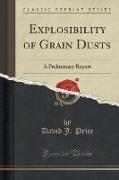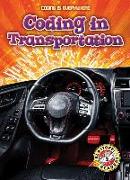Explosibility of Grain Dusts
BücherAngebote / Angebote:
Excerpt from Explosibility of Grain Dusts: A Preliminary Report
Explosions in several flour mills in 1878, clearly proved that flour dust under certain conditions is highly explosive, and immediately caused flour millers to take precautions to guard against a repetition of an occurrence of this nature.
General interest was again awakened among milling men, however, when an explosion occurred in a feed-grinding plant at Buffalo, N. Y., on June 24, 1913, by which 33 men lost their lives, and upwards of 70 were injured. To assist in the work being done upon the explosibility of coal dust, the Bureau of Mines, for some time has endeavored to study dust explosions in surface plants, and therefore made inquiry into this disaster. The Bureau in this way came into touch with the officials of the various milling companies in that section. The cereal, flour and feed millers of Buffalo and Western New York were desirous of obtaining any possible information relative to the explosibility of grain dusts, that would assist them in taking effective safety precautions, in addition to the measures that had already been adopted.
A co-operative movement between milling interests generally and the Bureau of Mines, was arranged for the purpose of making a scientific study of the explosibility of grain dusts, and of methods pertaining to the prevention of such explosions. The Millers were represented in the conduct of the work by Messrs. Lawrence E. Harmon, President of Buffalo Cereal Company, Frank F. Henry, Manager, Washburn Crosby Company, and George F. Urban, Secretary of George Urban Milling Company, all of Buffalo, N. Y. Prof. George A. Hulett, Chief Chemist of the Bureau of Mines, was placed in charge of the study, and David J. Price was assigned to the field engineering work in connection with the problem. The work was started August 1, 1913, and a complete series of dust samples was collected, covering the various lines of milling, in order to conduct the necessary tests to determine the degree of inflammability. The aim was to trace the grain from the beginning of the handling, either from boats or cars, through the various points in the elevators, and the different stages of production, thereby securing a representative series of dust samples throughout the entire plant. These were carefully collected, and the conditions at the points of collection were fully noted, relative to nature of dust, manner of production, quantity present, and similar essential details.
About the Publisher
Forgotten Books publishes hundreds of thousands of rare and classic books. Find more at www.forgottenbooks.com
This book is a reproduction of an important historical work. Forgotten Books uses state-of-the-art technology to digitally reconstruct the work, preserving the original format whilst repairing imperfections present in the aged copy. In rare cases, an imperfection in the original, such as a blemish or missing page, may be replicated in our edition. We do, however, repair the vast majority of imperfections successfully, any imperfections that remain are intentionally left to preserve the state of such historical works.
Folgt in ca. 5 Arbeitstagen




